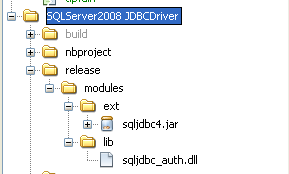A month or two ago, we moved all of our Java tests at Apprenda to run using the Maven Scalatest plugin . We have been using ScalaTest from day one; however, for a while there we were using SureFire + @RunWith + JUnitRunner annotations to kick off the tests. However, since IntelliJ was quite happy to run ScalaTest tests without anything else (e.g. like the @RunWith and JUnitRunner annotations), we would sometimes end up in a situation where we have some tests that are created during development in the IDE; however, when the build is run using just plain Maven, it would skip over these tests.
So, the as described in the ScalaTest documentation on working w/ the plugin , you first disable the surefire plugin, and then add the ScalaTest Maven plugin to run the tests. That all worked great, and now all of our tests run, regardless of whether we remembered to add the @RunWith annotation.
That presented a problem for me : when we were running the tests with SureFire, NetBeans was more than happy to run and debug the tests. However, when we switched to the Maven ScalaTest plugin - no such luck .. what do to ? I'm totally fine with not seeing the graphical test runner results that NetBeans shows w/ JUnit Tests ; however, where it becomes a problem is when I can't run or debug the individual tests from the IDE. The tests run just fine when you "Test" the whole project (e.g. right click on the project and choose "Test" from the context menu), but if you try to run an individual test (e.g. right click on a test case and choose Test from the context menu), or when you're inside the test case go to the Run -> Test File menu you're out of luck, nothing shows up.
So, getting the single test to run from NetBeans turns out to be pretty simple :
1. In the Project Properties -> Actions panel, choose the "Test File" action, change the properties from "test=${packageClassName}" to "suites=${packageClassName}" . As indicated in the ScalaTest documentation, the way to tell ScalaTest what test to run is using the suites system property, e.g. :
So, that's great, but how do you debug the test ? Looking at the ScalaTest documentation I was a bit confused on how to do this, as there were a few options related to debugging, but which ones to set in order to get this from NetBeans, it wasn't entirely clear.
It turns out the fix was fairly simple :
1. Since by default NetBeans runs surefire:test to run individual tests, the goal that is run needed to be switched to just "test" - this allows the Maven Scalatest plugin to run (as it binds to the test phase and does nothing for surefire:test)
2. I had to add a couple of additional system properties that ScalaTest needs in order to run the right test, turn on debugging, and connect the NetBeans debugger and the ScalaTest test that is running.
#This teslls scalatest to run the test with this class
suites=${packageClassName}
#These tell ScalaTest to start the new process with debugging enabled
logForkedProcessCommand=true
debugForkedProcess=true
debugArgLine=-Xdebug -Xrunjdwp:transport=dt_socket,server=n,address=${jpda.address}
# This tells netbeans to fire up the debugger and wait for a connection
jpda.listen=true
Here's an example of what it looks like :
Tada - enjoy being able to run and debug individual ScalaTest tests right from NetBeans !




